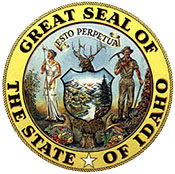Financial terms and definitions.
Activity
State accounting reporting group for specific financial transactions impacting defined users.
Agency
An administrative division of the department or reporting entity for which a budget request package is submitted, e.g., Department of Finance, DFM, etc.
Appropriation
A provision of legal authority given by the legislature that permits a department, office, or institution of the state to draw moneys from the state treasury for an object or demand against the state that is specified by amount, program, account category, fund, and period.
Base
Starting point for development of a fiscal year’s budget request. The base reflects previous year's expenditures plus or minus expenditure adjustments and base adjustments.
Board of Examiners Reduction
A reduction in the appropriation of an agency directed by the State Board of Examiners in consultation with the Division of Financial Management.
Budget and Policy Analysis
The division within the Legislative Services Office responsible for development and presentation of budget and policy information to legislators.
Appropriation Unit
Appropriation control mechanism within Luma Finance used to differentiate between appropriated and non-appropriated elements within an agency's program structure.
Capital Outlay (CO)
Account Category from which expenditures for land, highways, buildings, fixtures, automobiles, machinery, equipment, and furniture that meets the State Controller’s fiscal policy for inventoriable assets.
Capitalized Lease
Lease of land, buildings, vehicles, computers, machinery, office equipment or other property with a lease term, including automatic renewals, of longer than one year, and which meet the state capitalized lease policy threshold of $100,000 or more per the lease.
Caseload
Increases or decreases in clients required to be served by state agencies or enrollment numbers in public school or colleges and universities. Caseload changes do not include changes in benefit levels for existing clients.
Change in Employee Compensation (CEC)
Cost of salary increases for agency personnel. CEC is calculated using form B6 and the calculation factor determined by DFM. CEC is requested in DU 10.61.
Continuous Appropriations
Statutory appropriations not set by annual legislative action. Actual expenditures are based on program needs and cash availability.
Decision Unit (DU)
A specific item in the budget request. Decision units are standardized in order that statewide information may be summarized and reported. A table of decision unit categories can be found in Appendix B of this manual.
Deficiency Warrants
Expenditures that are authorized but for which no specific appropriation is provided until after the expense amount is known. Examples include fire suppression costs and agricultural pest eradication expenses.
Division of Financial Management (DFM)
The Division of Financial Management is the Governor's Budget Office. The Division assists the Governor in developing revenue projections and agency expenditure recommendations for presentation to the Legislature.
Employee Benefit Costs
A budgetary adjustment for changes (generally increases) in the cost of maintaining a range of employer-paid benefits for state employees such as Social Security, retirement (PERSI), unemployment insurance, and health insurance.
Encumbrances
Obligations for expenses incurred in one fiscal year but not paid until after the end of the same fiscal year.
Expenditures
Cash outlays for items necessary and essential to the operation of the agency but not including encumbrances.
Full-time Positions (FTP)
Full-time and part-time permanent agency staffs who are not part of group or board positions. The number of FTP is normally capped by the Legislature for most state agencies each fiscal year.
Function
Grouping of agency activities into areas of like purpose in STARS.
Fund
A unit within the accounting system for collection of revenue and expenditure information from specific sources.
Goal
Focus of agency resources that will support the overall mission of the organization.
Governor's Holdback
Authority given to the Governor to temporarily limit expenditures of agencies due to shortfalls in revenue projections for the fiscal year.
Idaho Technology Authority (ITA)
ITA plans and coordinates the state's approach to information technology. Administratively, the ITA resides in the Office of Information Technology Services. Idaho Code 67-831, 67-832, 67-833.
Legislative Services Office (LSO)
Full-time staff who serve the Legislature. LSO includes Budget and Policy Analysis, the Legislative Audits, Research and Legislation.
Line Item
Additional decision units requesting funding for new or expanded activities after maintenance of current operations.
Lump Sum (LS)
Legislative authority to expend appropriated funds from any Object Class the agency determines appropriate.
Maintenance of Current Operations (MCO)
Resources needed to continue current levels of service.
Noncognizable Funds
Non state funds obtained after appropriations are established and from which expenditures must be made prior to the next legislative session. Use of noncognizable funds must be approved by DFM.
Object Code (Class)
Categories of expenditures. Object Code Classes include Personnel Costs (PC), Operating Expenditures (OE), Capital Outlay (CO), Trustee and Benefit Payments (TB), and Lump Sum (LS).
Object Transfers
Movement of funds between appropriated Object Classes. Funds may be moved from Personnel Costs, Operating Expenditures, and Trustee and Benefits Payments to any other object class. Funds may not be moved into Personnel Costs or out of Capital Outlay without legislative action. All object class transfers require DFM approval.
Objective
Means to achieve a long-term goal.
One-time
Spending authority granted for one budget year only. One-year grants or capital purchases are examples of uses of one-time funding. One-time funding is removed prior to establishment of the base budget for the following fiscal year.
Operating Expenditures (OE)
Object Class from which expenditures for daily operations of the agency are recorded.
Outcome
Results of program services on the constituent group served.
Output
Number of services performed by an activity within a program.
Performance Report
Agency information regarding completion of targeted performance standards that are part of agency strategic plans. Information is reported in the budget request document on form B3 and B3.1 and compiled as Part III of the Governor's Executive Budget message.
Personnel Costs (PC)
Object Class from which expenditures for wages, salaries, and benefits of agency staff are recorded. This includes temporary staff funded in group positions. (Contract temp services are recorded in Operating Expenditures.)
Program
An agency or part of an agency identified for budgeting purposes. Programs may be functions or activities within an agency depending on the agency's STARS structure.
Program Transfers
Movement of funds between more than one budgeted program within an agency. Program transfers are limited to 10% cumulative change from the appropriated amount for any program affected by the transfer.
Reclassify
Upon the request of an agency, a specific position may be reclassified upward or downward as determined by the Division of Human Resources. For example, an agency may request an Administrative Assistant 1 position to be reclassified as an Administrative Assistant 2 position.
Reappropriations
Unused funds from a previous fiscal year available through Legislative action for use in the current fiscal year. Commonly known as Carryover Authority.
Receipts to Appropriation
Money received from the sale of assets or insurance settlements that is added back to the appropriated object class from which the asset was originally acquired.
Refactor
The Division of Human Resources may revise the pay grade for an entire class of positions statewide. For example, the pay grade for all Administrative Assistant 1 positions throughout the state could be refactored from pay grade F to pay grade G. Refactoring requires approval from the Division of Financial Management if there would be fiscal impact.
Rescission
A change to the appropriation that reduces spending authority that is granted by the Legislature in the current fiscal year.
STARS
Statewide Accounting and Reporting System operated by the State Controller's Office.
State Board of Examiners
A board consisting of the Governor, the Secretary of State, and the Attorney General with the State Controller acting as secretary to the Board. The Board of Examiners reviews all claims against the state.
Statewide Cost Allocation Plan (SWCAP)
State plan for implementing federally approved indirect cost allocation among all state funding sources.
Statewide Goals and Objectives
Structure within STARS used to provide expenditure information on a statewide functional basis.
Strategy
Action or activity leading to the completion of an objective.
Supplemental Appropriation
A change to the appropriation that adds to, reduces, or adjusts spending authority between Objects that is granted by the Legislature in the current fiscal year.
Trustee and Benefit Payments (TB)
An expenditure class through which funding for authorized payments can be passed through to eligible individuals (e.g. scholarships, public assistance, retirement benefits) or to other governmental entities for the provision of services (e.g. intra or intergovernmental contracts, state support for local community college districts, community development block grants).
Wage and Salary Report (WSR)
A series of reports produced by the Employee Information System Unit of the State Controller's Office which identify wages, salaries and related benefit costs for all budgeted positions and also projects increases in costs for the current and following fiscal years.




